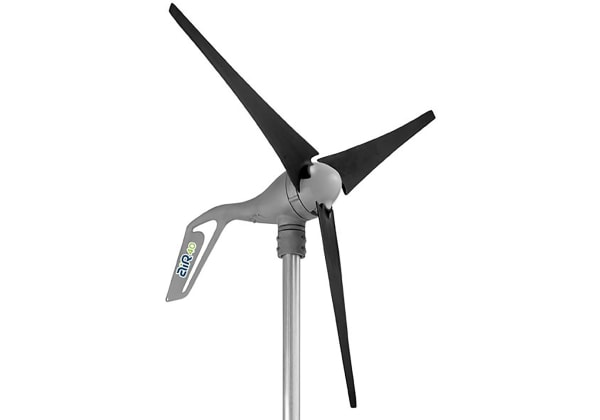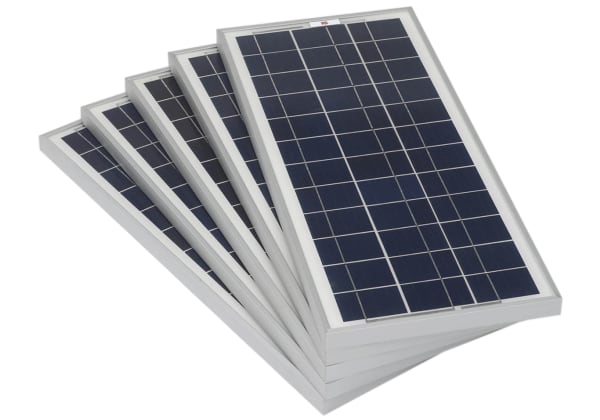- Published 19 Apr 2024
- Last Modified 19 Apr 2024
- 6 min
Guide to the Future of UK Renewable Energy
For the UK to meet its renewable energy goals it will need technological innovations and systems that encourage their use. Read more about the trends that will be driving the future of this industry.

What is the future of renewable energy? The UK has set ambitious targets for its energy transition - complete net zero by 2050, meaning completely offsetting environmentally harmful emissions with environmentally friendly measures, such as renewable energy. The country is making progress towards this goal, with a strong future of renewable energy sources projected.
What Does the Future of Renewable Energy in the UK Look Like?
The UK renewable energy strategy has many fronts, and these efforts are already bearing fruit and proving to be scalable, indicating a strong future of renewable energy sources.
Solar Energy in the UK
Renewable energy innovations in the solar field are making solar panels increasingly affordable and widespread. The UK’s solar power capacity has surpassed 15 GW, and the country aims to achieve 40 GW by 2030.
The UK currently exempts residential rooftop solar panels from VAT, and this is encouraging households to install them on their homes. On the business side of things, the Smart Export Guarantee allows companies with solar panels installed to be paid for surplus energy they supply to the grid. Also, some city councils offer grants for commercial solar installations.
As energy from traditional sources becomes scarce and expensive (and inflates other costs of living and doing business), families and companies with finances and the environment on their minds will turn to solar power as a remedy.
Solar farms, however, have faced more resistance, though they are becoming more accepted. The long rows of solar panels needed to generate meaningful energy quantities require considerable land, which could often otherwise be used for agriculture. There are recent solutions to this, though, such as spacing or elevating solar panels to also allow growing crops or grazing cattle. This win-win industrial ecosystem can help realise the renewable energy predictions for solar power’s bright future.
Wind Energy in the UK
Wind farms are the great success story of UK renewable energy. Accelerated development of both onshore and offshore wind turbines has allowed wind to catch up with, and even surpass, natural gas as the dominant source of electricity. Each currently accounts for roughly a third of the country’s needs, but renewable energy projections show wind energy providing an increasingly greater share.
The UK’s landscape is well-suited to wind farms, given our long-stretching shorelines, shallow coastal waters, and of course, powerful winds! UK investment in renewable energy has blown wind-generated electricity capacity past 20 GW, and the country aims to reach 50 GW by 2030 as part of its net-zero goals. Renewable energy innovations such as floating wind turbines will assist this by unlocking energy potential from deeper seas.
Wind-generated electricity is demonstrating renewable energy advantages through its potential for widespread deployment throughout the UK and all the job creation and energy revenue that come with it. It will be a key player in the future of renewable energy.
Renewable Sources of Fuel
UK investment in renewable energy includes the development of alternative, renewable fuel sources, including hydrogen and biomass.
The Powering Up Britain plan for improving the country’s energy security features multiple initiatives for developing an economy for hydrogen fuel. These include:
- Certification for hydrogen produced with low carbon emissions
- A Net Zero Hydrogen Fund for supporting commercial hydrogen production
- Funding through a Hydrogen Production Business Model to help hydrogen fuel projects compete with ones that use higher carbon fuels
All this is possible thanks to recent renewable energy innovations in the hydrogen fuel space:
- Hydrogen fuel cells for vehicles
- Green hydrogen (produced from renewable energy sources)
- Hydrogen carriers (materials that can mix with hydrogen to allow easier transportation of it)
- Using carbon capture, utilisation, and storage (CCUS) to lessen the carbon footprint of hydrogen production
The UK also has a strategy for using biomass (organic waste) for energy production. Biomass already contributes more than 5% of the country’s electricity generation, and the Government intends to keep cultivating this through incentive programmes.
Deploying biomass feedstocks to where they achieve the most benefits will be key, so net-zero strategies will need to prioritise domestic biomass production and consider the feedstocks’ various types. Renewable energy predictions for biomass also show greater use of carbon capture, utilisation, and storage (CCUS) to minimise the emissions from this energy production.
UK Hydropower
The UK has many renewable energy ideas for the future, but they do not focus much on hydropower (water-generated energy). Hydropower continues to have its place in the country’s energy generation, though for less than 5% of it. Dams and other hydropower facilities have high up-front costs and massive environmental impacts of their own, including altered landscapes, changes to water availability and quality, and harmed habitats. This makes them a tougher sell on the path to net zero.
Renewable energy trends could include smaller-scale hydropower, though. One to ten MW systems can be installed in smaller streams or existing infrastructure for things like wastewater. This lessens their environmental impact due to affecting less water and adding onto already-built systems.
Renewable Energy Storage
As UK renewable energy generation becomes more practical and widespread, storing this generated energy will be a separate challenge. Wind and sunlight obviously vary, but electricity needs are constant. This makes storing renewable energy for on-demand deployment essential.
Batteries for renewable energy storage include electric vehicle batteries and large grid-scale devices, and each category has its challenges. The electric vehicle market in the UK is growing fast, but their batteries (and their charging infrastructure) still need further development to get their storage capacities to a level practical for all consumers. Meanwhile, renewable energy for the grid remains intermittent and challenging to store, so for now we depend on non-renewable sources to provide a baseline supply.
There are ongoing innovations in terms of batteries for renewable energy storage at grid scale, but this means staggering numbers of lithium-ion batteries that must be built to last for decades (to avoid excessive pollution from spent batteries). Renewable energy projections foresee these three types of energy storage (personal devices, vehicles, grids) working together to exchange surplus energy and optimise the country’s overall energy usage.
What Will Be the Benefits of Renewable Energy Innovation?
Renewable energy innovations will continue to emerge, both out of necessity in the fight against climate change and to compete in these developing industries. This will make green technologies more affordable and available, which will in turn help the environment and reduce energy costs. Green innovations will also help these technologies run more efficiently and lower the carbon footprint of their manufacturing, all helping achieve net zero.
UK investment in renewable energy will continue to create jobs and make the country more self-sufficient in its energy needs. If imported fossil fuels continue to become more expensive and less available from ethically responsible countries, more people will appreciate renewable energy advantages.
RS can help you achieve new sources of energy for the future of your business. Browse our wind and solar offerings to participate in the future of renewable energy.


